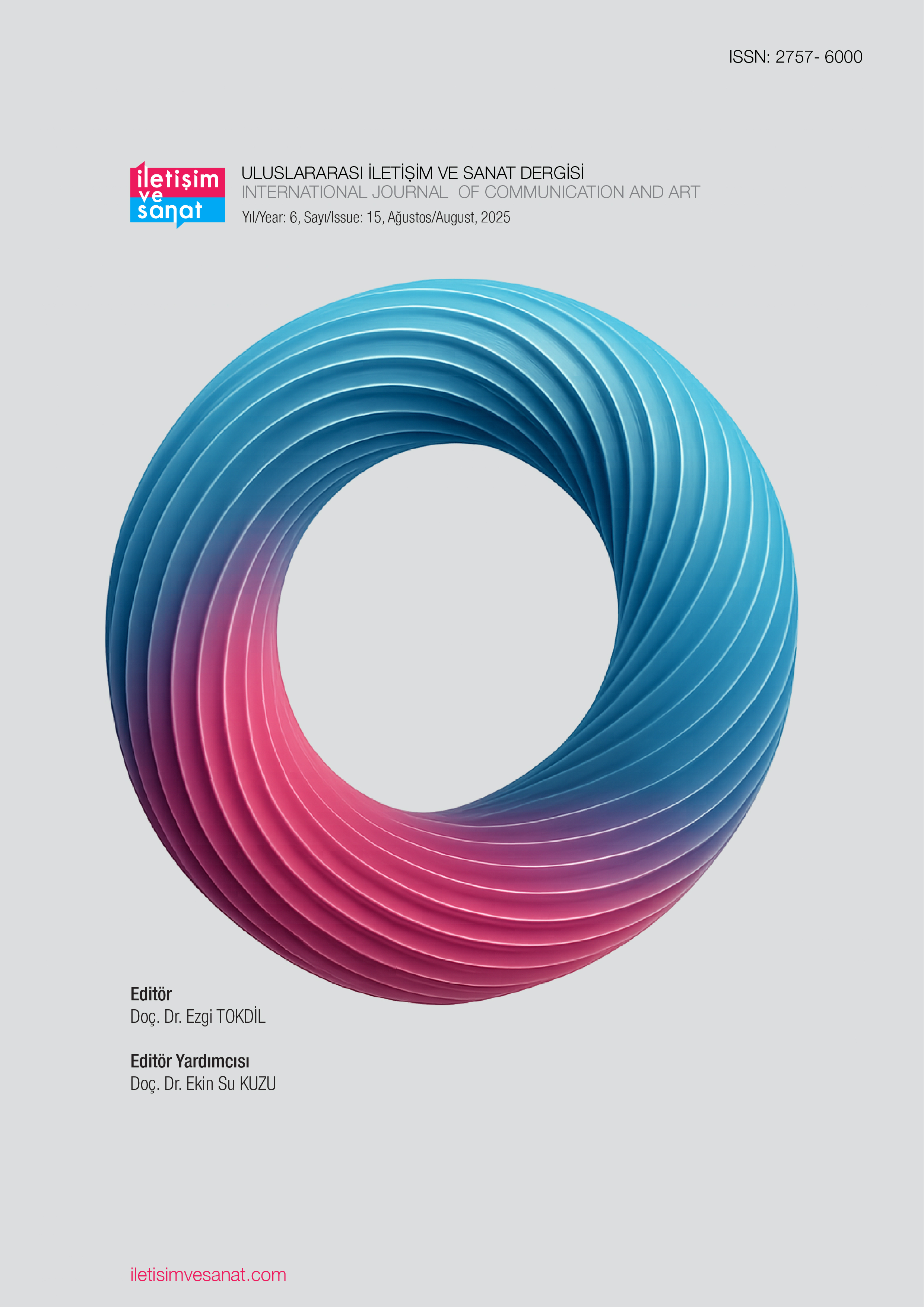Author :
Abstract
Bu araştırmada amaç, 17. yüzyıl Hollanda natürmort resimlerinde kullanılan mavi-beyaz Çin porselenlerinin iki kültür bağlamında sosyal, ekonomik ve sanatsal bağlamda incelenmesidir. Bu araştırmanın teorik kısmı nitel araştırma yöntemlerinden betimsel incelemeyle oluşturulmuş olup, veriler literatür taraması kullanılarak elde edilmiştir. Veriler betimsel analiz kullanılarak çözümlenmiştir. Araştırmada ele alınan sanatçıların eserleri Julie Hochstrasser’in Natürmort ve Ticaret isimli kitabında benimsediği yaklaşım ile anlamı resimlerin biçimsel niteliklerinde arayan teorisyenlerin anlayışından hareket edilmiştir. Araştırma, 17. yüzyılda natürmort türünde eserler üretmiş olan yedi sanatçı ile sınırlandırılmıştır. Araştırmada elde edilen sonuca göre, 16. yüzyılda yeni ticaret yollarının bulunması, bu yüzyılın sonlarından itibaren ekonomik ve kültürel olarak dönüşüm yaşayan Hollanda Cumhuriyetiyle Çin arasındaki etkileşimler özellikle 17. yüzyılın başlarından itibaren Çin porselenlerine olan talebi arttırmıştır. Çin’de üretilenlerin niteliklerine sahip porselenin Avrupa’da üretilememesi onu nadir ve pahalı bir obje haline getirmiştir. Zengin orta kesim ve tüccarların porselenlere olan yoğun talebi onu vazgeçilmez bir tüketim nesnesi haline getirmiştir. Sosyal dönüşümlerin yanı sıra Hollanda’da resim sanatının alt konularından olan natürmort 17. yüzyılda yükselişe geçmiş, kompozisyonlar dönemin zenginliğini ve bolluğunu yansıtan egzotik objeler, meyveler, yemişler, çiçekler ve hayvanlarla donatılmıştır. Ressamların kompozisyonlarında resmettikleri nadir objelerin başında Çin’den ithal edilen mavi-beyaz porselenler gelmiş, bir gösteren olarak sosyal ve ekonomik içerikli ima ve anlamları üzerinde barındırmıştır.
Keywords
Abstract
The aim of this research is to examine the blue-white Chinese porcelain depicted in 17th century Dutch still life paintings in the context of social, economic and artistic contexts in two cultures. The theoretical part of this research was created by descriptive analysis, which is one of the qualitative research methods, and the data were obtained by using the literature review. The data were analyzed using descriptive analysis. The works of the artists discussed in the research were based on the approach adopted by Julie Hochstrasser in her book Still Life and Trade, and the understanding of theorists who seek meaning in the formal qualities of the paintings. The research was limited to seven artists who produced works in the genre of still life in the 17th century. According to the results obtained in the research, the discovery of new trade routes in the 16th century, the interactions between the Dutch Republic and China, which has been economically and culturally transformed since the end of this century, have increased the demand for Chinese porcelain, especially since the beginning of the 17th century. The fact that porcelain, which has the qualities of those produced in China, cannot be produced in Europe has made it a rare and expensive object. The intense demand for porcelain by the wealthy middle class and merchants has made it an indispensable object of consumption. In addition to social transformations, still life, which is one of the sub-subjects of painting in the Netherlands, was on the rise in the 17th century, and the compositions were equipped with exotic objects, fruits, nuts, flowers and animals reflecting the richness and abundance of the period. One of the rare objects depicted by the painters in their compositions was the blue-white porcelain imported from China, and as a signifier, it contained social and economic implications and meanings.





